EMPLOYEES
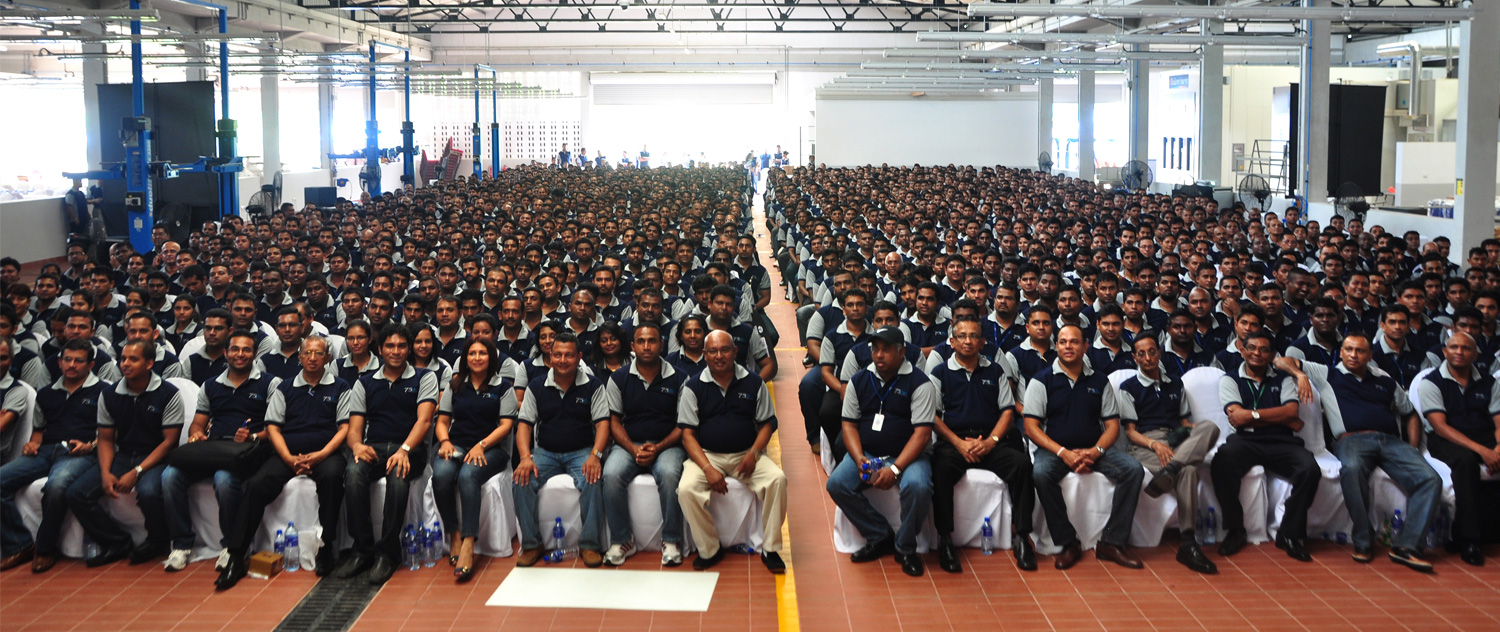
Employment & Labour/ Management Relations
Creating an environment of friendship and trust through clear and honest communication
Dimo has invested in an “Employee First” philosophy as we have recognized our family of employees as the key driving force behind the achievement of our strategic objectives. Our thinking has been further moulded by the adoption of the UN Global Compact 10 Principles, which have helped us design the value proposition we provide for our team. The actions that Dimo takes to further enhance the value of our employee capital base should translate to the development of the value delivered to all our other stakeholders. Ultimately, the Dimo Tribe serves as the keystone that guarantees our sustainability, and this indisputable fact drives our passion to nurture and mould our family in line with the key value propositions delivered by Dimo to its customers.
The process of building a strategically aligned team begins with establishing an integrated recruitment and retention process that is designed to consider organizational talent requirements at all times. The primary objectives of our talent development programs are twofold; firstly, the continuous development of our team to attentively service the requirements of our customers and principals and secondly, to provide an environment for employees to take ownership of their career direction by offering them the opportunity to develop a lifelong career with Dimo.
Sustained talent development is only possible through the integration of a host of initiatives which are sensitive to organizational and individual employee needs. The groundwork laid by usis based on performance reviews and management the construction of individual development plans, the formal recognition of labour and human rights, the establishment of systems to capture and handle labour and human rights related grievances, competitive remuneration policies, special reward and recognition schemes for high performers and the institution of operational measures to ensure health and safety.
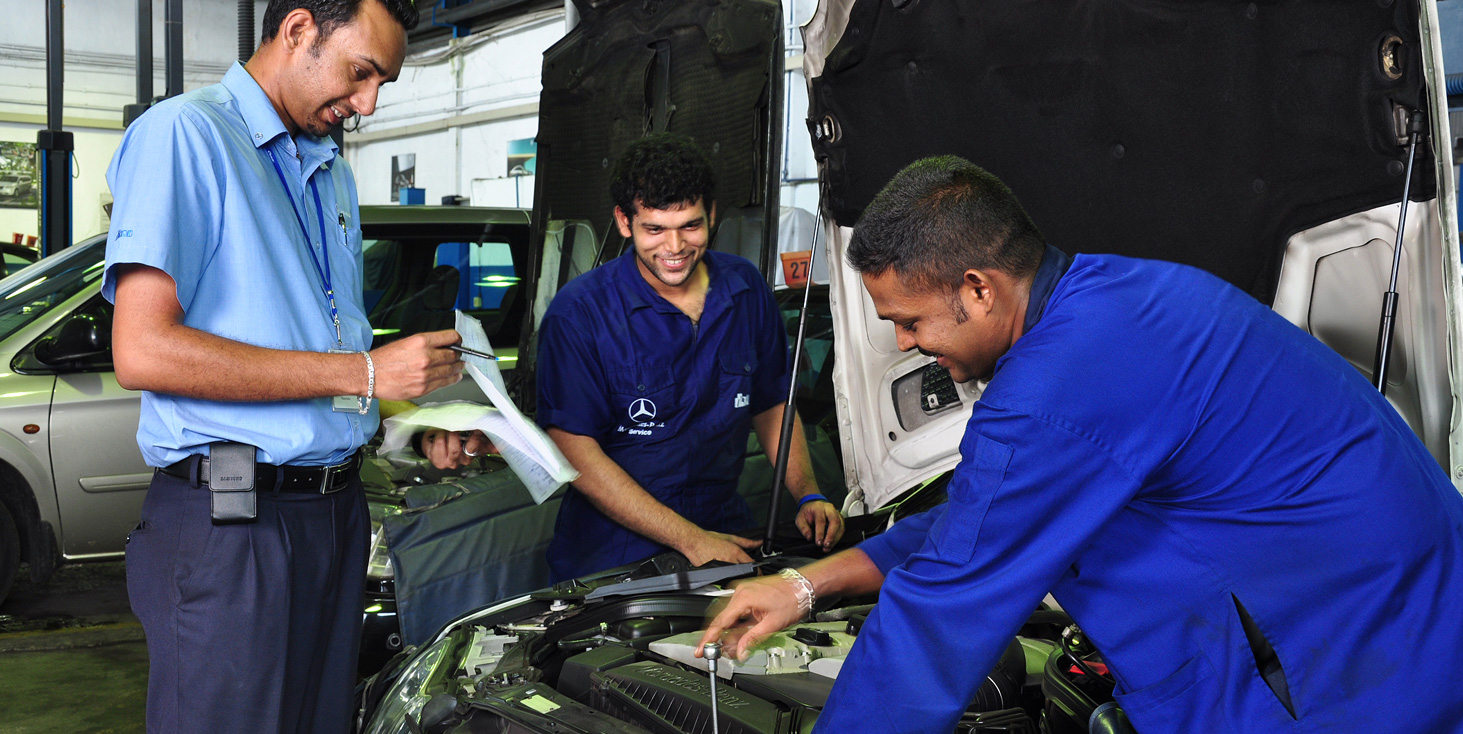
Employee diversity
Description |
<20 |
21-30 |
31-40 |
41-50 |
51< |
Total |
|||||||
2013/14 |
2012/13 |
2013/14 |
2012/13 |
2013/14 |
2012/13 |
2013/14 |
2012/13 |
2013/14 |
2012/13 |
2013/14 |
2012/13 |
||
Board of Directors |
M |
|
|
|
|
1 |
7 |
6 |
7 |
7 |
|||
F |
|
|
|
|
|
|
- |
||||||
Senior Management |
M |
|
1 |
1 |
21 |
23 |
14 |
17 |
9 |
7 |
45 |
48 |
|
F |
|
|
1 |
2 |
1 |
1 |
2 |
|
3 |
4 |
|||
Middle Management |
M |
|
64 |
49 |
91 |
64 |
20 |
16 |
17 |
17 |
192 |
146 |
|
F |
|
9 |
5 |
10 |
9 |
4 |
2 |
4 |
4 |
27 |
20 |
||
Executive |
M |
|
2 |
144 |
142 |
150 |
142 |
56 |
65 |
35 |
31 |
385 |
382 |
F |
|
35 |
29 |
10 |
13 |
6 |
6 |
5 |
8 |
56 |
56 |
||
Clerical/Supervisory |
M |
|
16 |
208 |
230 |
108 |
119 |
22 |
23 |
16 |
16 |
363 |
404 |
F |
|
2 |
55 |
48 |
5 |
4 |
1 |
- |
|
- |
62 |
54 |
|
Manual |
M |
9 |
9 |
167 |
193 |
90 |
85 |
26 |
24 |
13 |
12 |
296 |
323 |
F |
1 |
|
|
|
|
0 |
- |
||||||
Non Ex- Contract |
M |
|
3 |
26 |
32 |
17 |
9 |
13 |
10 |
23 |
23 |
79 |
77 |
F |
|
1 |
1 |
|
2 |
4 |
- |
||||||
10 |
32 |
710 |
730 |
505 |
469 |
163 |
166 |
131 |
124 |
1519 |
1521 |
||
Recruitment by age, position, category and rate from total number of employee
Description |
<20 |
21-30 |
31-40 |
41-50 |
51< |
|
Total |
||||||||
2013/14 |
2012/13 |
2013/14 |
2012/13 |
2013/14 |
2012/13 |
2013/14 |
2012/13 |
2013/14 |
2012/13 |
2013/14 |
Rate of hire by category (%) |
2012/13 |
|||
Board of Directors |
M |
|
|
- |
|||||||||||
F |
|
|
- |
||||||||||||
Senior Management |
M |
3 |
5 |
|
3 |
|
1 |
3 |
0.2 |
9 |
|||||
F |
|
2 |
|
|
|
|
- |
2 |
|||||||
Middle Management |
M |
22 |
28 |
20 |
17 |
4 |
3 |
3 |
4 |
49 |
3.2 |
52 |
|||
F |
4 |
|
|
|
4 |
0.3 |
0 |
||||||||
Executive |
M |
1 |
2 |
36 |
60 |
9 |
30 |
2 |
2 |
7 |
55 |
3.6 |
94 |
||
F |
|
1 |
3 |
3 |
1 |
4 |
|
1 |
|
4 |
0.3 |
9 |
|||
Clerical/Supervisory |
M |
6 |
12 |
42 |
131 |
8 |
17 |
1 |
4 |
|
4 |
57 |
3.7 |
168 |
|
F |
2 |
1 |
14 |
9 |
|
|
|
1 |
16 |
1.0 |
11 |
||||
Manual |
M |
4 |
8 |
28 |
78 |
3 |
21 |
|
1 |
|
35 |
2.3 |
108 |
||
F |
|
|
|
|
|
|
- |
0 |
|||||||
Non Ex- Contract |
M |
3 |
9 |
13 |
25 |
9 |
3 |
4 |
2 |
4 |
10 |
33 |
2.2 |
49 |
|
F |
|
1 |
2 |
|
1 |
|
1 |
1 |
2 |
0.1 |
4 |
||||
Rate of hire by age group (%) |
|
1.1 |
- |
10.7 |
- |
3.5 |
- |
0.7 |
- |
0.9 |
- |
- |
|
|
|
Total |
16 |
33 |
163 |
338 |
53 |
98 |
11 |
17 |
15 |
20 |
258 |
16.9 |
506 |
||
Rate of recruitment from total number of employee 16.9 % (33.3% in 2012/13)
Employee turnover by gender, age, position and rate from total number of employee
Description |
<20 |
21-30 |
31-40 |
41-50 |
51< |
|
Total |
|||||||
2013/14 |
2012/13 |
2013/14 |
2012/13 |
2013/14 |
2012/13 |
2013/14 |
2012/13 |
2013/14 |
2012/13 |
2013/14 |
Rate of turnover by category (%) |
2012/13 |
||
Board of Directors |
M |
|
|
|
|
|
- |
- |
||||||
F |
|
|
|
|
|
|
- |
- |
||||||
Senior Management |
M |
|
|
4 |
2 |
5 |
|
9 |
0.6 |
2 |
||||
F |
|
|
|
1 |
1 |
|
1 |
0.1 |
1 |
|||||
Middle Management |
M |
|
12 |
13 |
16 |
20 |
5 |
2 |
6 |
2 |
39 |
2.6 |
37 |
|
F |
|
1 |
|
1 |
|
|
1 |
0.1 |
1 |
|||||
Executive |
M |
1 |
33 |
37 |
21 |
19 |
3 |
6 |
8 |
5 |
66 |
4.3 |
67 |
|
F |
|
1 |
3 |
3 |
|
3 |
7 |
0.4 |
3 |
|||||
Clerical/Supervisory |
M |
1 |
5 |
40 |
92 |
19 |
20 |
2 |
2 |
3 |
3 |
65 |
4.3 |
122 |
F |
|
1 |
5 |
17 |
|
1 |
|
|
5 |
0.3 |
19 |
|||
Mannual |
M |
|
1 |
35 |
30 |
7 |
14 |
1 |
3 |
1 |
44 |
2.9 |
48 |
|
F |
|
|
|
|
|
|
- |
- |
||||||
Non Ex- Contract |
M |
2 |
14 |
4 |
3 |
|
3 |
1 |
6 |
21 |
1.4 |
12 |
||
F |
|
1 |
|
1 |
|
2 |
0.1 |
- |
||||||
Rate of turnover by age Group (%) |
|
0.3 |
|
9.4 |
|
4.7 |
|
1.2 |
|
1.5 |
|
- |
17.1 |
|
Total |
4 |
7 |
142 |
189 |
74 |
84 |
18 |
16 |
22 |
16 |
260 |
|
312 |
|
|
Employee Turnover Rates |
||||
Year |
2014/2013 |
2013/2012 |
2012/2011 |
2011/2010 |
2010/2009 |
Male |
17.74 |
22.22 |
21.14 |
19.19 |
14.04 |
Female |
11.03 |
17.91 |
21.55 |
21.34 |
15.68 |
Janitorial, call centre, transportation, vehicle washing, paint work, and transportation for identified purposes and security service activities with limited operations are outsourced on a contract basis. Service provider activities are covered under our supplier code.
At the end of the financial year under review, Dimo had outsourced 386 (598 in 2012/13) service providers.
Our corporate welfare system involves an intelligently structured set of tools and services designed to improve work/life balance and more generally, the quality of our working systems. Employee benefits include life insurance, hospitalization and surgical insurance parental leave and provision for retirement. All employees of the DIMO tribe are full time employees.
No. of employees entitled for maternity leave |
No. of employees took maternity leave |
No. of employees returned to work after maternity leave |
No. of employees who are still employed for the last 12 months after the return from maternity leave |
Return to work rate |
152 |
10 |
10 |
5 |
100 |
Clear and transparent communications with our employees remain a key factor in our operation. We have institutionalized and integrated our employee communication processes and our open door policy guarantees sensitivity to any employee grievance or concern. The continued operation of the Employee Council, HR Clinics, the Dimo intranet and Employee Satisfaction Surveys conducted by an independent third party, are designed to foster better employee engagement. We have taken our commitment to transparency and dynamism in open communication one step further by ensuring that all employees are kept abreast of any operational changes that affect the execution of their duties or the status and nature of their employment as soon as such decisions are made or during the decision-making process. Such notification is made directly to employees by their divisional heads as an organizational initiative and is not based on any type of collective agreement. Further, such changes are discussed during our Employee Council Meetings. These communication processes ensure that our initiatives are continuously evaluated, thus giving us the opportunity to mould our interactions with our team in an organic fashion, in order to deliver increasing value to the organization and to all our employees.
Management Relations, Freedom of Association & Collective Bargaining
The creation of a contented, productive and efficient team in a smoothly functioning work environment
Developing employee engagement and setting a conducive work environment is essential to maintain an optimal level of service to our customers. This involves establishing direct communication lines with our employees so that their voices can be heard. While no trade unions or any collective bargaining agreement processes exist at Dimo, we do encourage freedom of association. Our approach is to create an open environment where frank communication between the employees and the management is the norm. The following activities facilitate the development of employee engagement and open communication:
1. An open door policy
2. The Employee Council
3. HR Clinics
4. The company intranet
5. Independent Employee Satisfaction Surveys
Moreover, the rights of the employees have been clearly spelled out by Dimo through a host of policy mechanisms, the effectiveness of which are discussed at the highest levels of the organization. Such frameworks have been specifically adapted to our operations in order to maintain the trust that our team places in us, whereby their interests are never compromised in Dimo’s value creation process.
These policy mechanisms are stated below:
1. The human resources policy
2. The human rights policy
3. A whistle blowing policy
4. The Code of Business Ethics
Employee Health and Safety
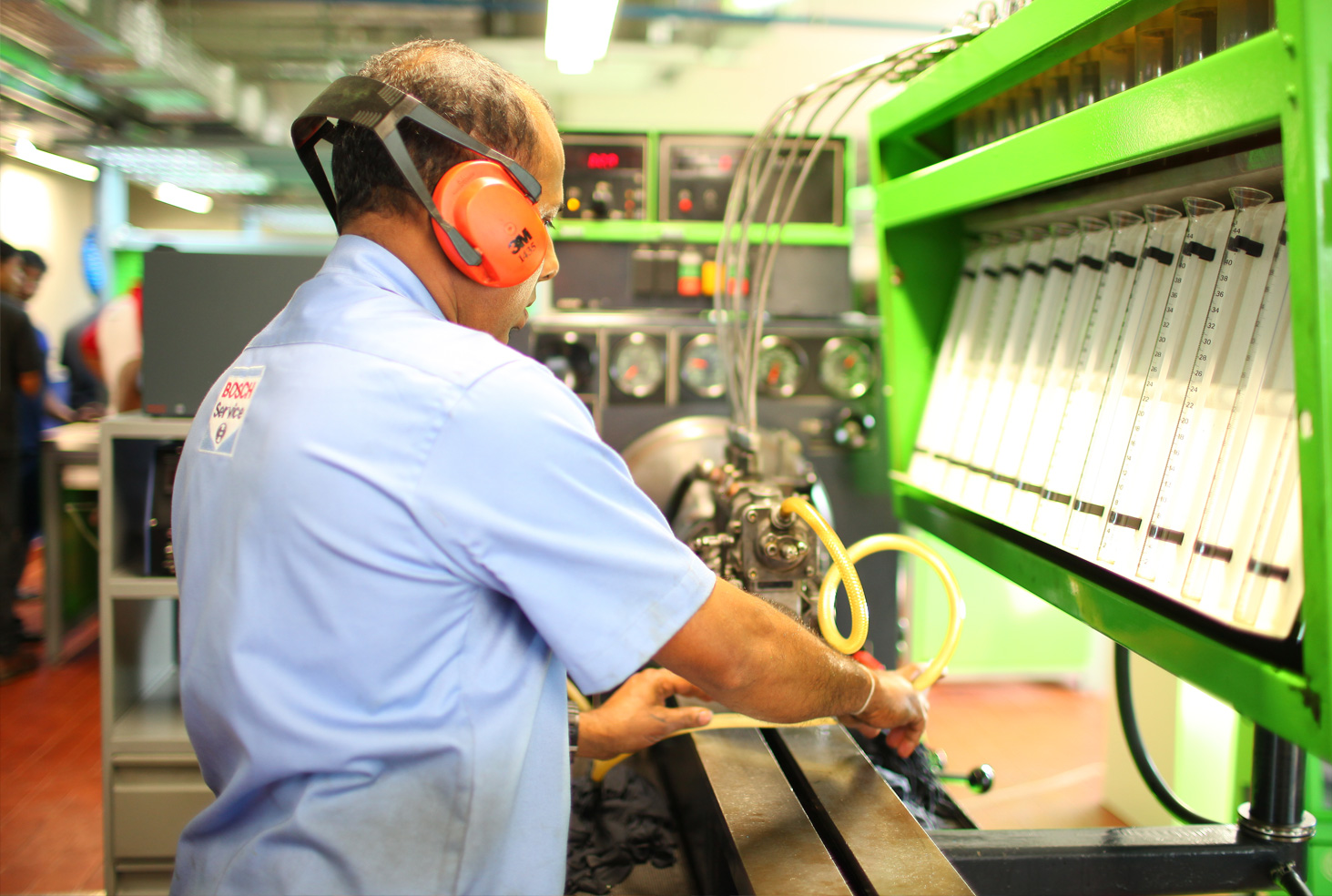
The guarantee of uncompromised health and safety for every employee is of paramount importance to Dimo, as the value of our employee capital and our operational functionality is dependent upon it. We work continuously towards obtaining the Occupational Health and Safety Standard (OHSAS 18001) certification as a reinforcement of our commitment to a safe workplace. This process involves the regular monitoring of the risk of injury and the exposure to occupational diseases at our service centers and any findings are utilised to improve the saftey mesures in workplace.
The management and operation of this policy are executed through the following measures:
1. A Health and Safety Committee (currently established at the Siyambalape workshop). 2 (11%) members represent the Management while 16 (88 %) employees represent the workforce on this committee.
2. The discussion of workplace safety issues at the monthly Employee Council.
3. The annual health and safety audit and an analysis of its findings at Board level, where health and safety measures are evaluated.
4. Regular awareness programs on safety measures.
5. The provision of and advocacy for the mandatory use of task-specific protective gear for workshop teams.
6. Formalized training plans that include health and safety and first aid training.
7. Regular counseling sessions and workshops for employees and their families relating to serious diseases and the maintenance of a healthy lifestyle.
8. The provider of state-of-the-art equipment and machinery in workshops in order to minimize workshop accidents.
9. Conducting of fire drills and training in how to respond to emergencies.
10. Ensuring the incorporation of modern safety features and mechanisms in all workshops and company premises.
Injuries/Diseases/Fatalities/Lost working days /Absenteeism |
2013/14 |
2012/13 |
2012/11 |
|||
Total No. |
Rate |
Total No. |
Rate (%) |
Total No. |
Rate (%) |
|
Injuries (Rate for 100 employee) |
20 |
1.31 |
20 |
1.31 |
22 |
1.66 |
Occupational diseases |
Nil |
Nil |
Nil |
Nil |
Nil |
Nil |
Lost working days |
165 |
- |
70 |
- |
129 |
4.8 |
Work related fatalities |
Nil |
Nil |
Nil |
Nil |
Nil |
Nil |
Dimo’s employee absenteeism ratio increased to 0.05% during the period under review as against 0.01 % in 2012/13.
Employee Training and Education
Developing talent and driving performance
Our approach to performance management and employee training is influenced by the need to foster the holistic development of our tribe. The delivery of superior services to our customers and the effective management of our principals require a well-trained team armed with the right tools of their trade. The continuous development of our team is a critical factor in our our competitive advantage.
Training and development is integrated with our performance management system and a formal process is followed to identify training needs and deliver a customized training experience.
The following mechanisms are utilized to fully realise our talent development program:
- Biannual participatory performance evaluations and career development reviews for all employees irrespective of gender or job category, which identify training needs where the employee is given the opportunity to define the training he/she requires.
- The preparation of a training calendar linked to the individual training needs of each employee.
- Designing training programs, workshops, knowledge sharing sessions and courses to satisfy training needs and the company’s strategic objectives.
- Dissemination of these programs through internal resource personnel or external consultants and the arrangement of overseas training on a need-specific basis.
- Evaluation of the effectiveness of all training programs and workshops based on participant feedback obtained after each session, so as to effect continuous improvement of program development processes.
- Driving self-development and employee engagement by encouraging all employees to go beyond their job descriptions and contribute to operational decisions.
The chart below details training hours by category and gender
Category |
Gender |
No. of Employees |
No. of Training Hours |
Per employee training hours per year |
||
2013/14 |
2012/13 |
2011/12 |
||||
Board of Directors |
M |
7 |
531.5 |
75.92 |
23.79 |
47.21 |
F |
|
|
- |
0.00 |
|
|
Senior Management |
M |
45 |
643.0 |
14.28 |
65.01 |
44.12 |
F |
3 |
48.0 |
16.00 |
46.00 |
123.50 |
|
Middle Management |
M |
192 |
5,149.5 |
26.82 |
23.53 |
33.73 |
F |
27 |
564.5 |
20.90 |
24.18 |
12.25 |
|
Executive |
M |
385 |
5,612.5 |
14.57 |
17.12 |
14.18 |
F |
56 |
1,442.0 |
25.75 |
25.99 |
16.04 |
|
Clerical/ Supervisory |
M |
363 |
2,890.0 |
7.96 |
10.88 |
7.74 |
F |
62 |
566.5 |
9.13 |
15.13 |
8.06 |
|
Manual & Contract |
M |
375 |
2,427.0 |
6.47 |
9.16 |
8.30 |
F |
4 |
21.0 |
5.25 |
0.00 |
|
|
Total |
M |
1367 |
17,253.0 |
12.62 |
15.37 |
13.48 |
F |
152 |
2,642.0 |
17.38 |
22.49 |
13.88 |
|
1519 |
19,895.0 |
13.10 |
16.00 |
13.52 |
||
In the year under review, 206 employees received external (local) training whilst 89 received overseas training, all of which were funded by the Company. During the year under review no skills management and lifelong learning training programmes were conducted for employee who have reached the retirement age.
Employee Hiring and retaining the finest talent available
The uncompromised service delivery to our customers, the principles and sustainable value delivered to our shareholders hinge upon the quality and composition of our team. The overall philosophy is the maintenance of transparency in our recruitment process so that recruitment objectivity and the alignment of recruits with operational and corporate goals are ensured throughout. Priority is given to internal candidates depending on their skill alignment with job requirements, giving them an opportunity to advance their careers. This is done to manage and minimize employee turnover so that recruitment costs are minimised and organizational loyalty fostered.
The following activities serve as mechanisms to maintain the quality and integrity of our recruitment process:
- The students of the Dimo Automobile Training School and the National Apprentice and Industrial Training Authority are given the opportunity to join Dimo, based on our recruitment needs.
- Career guidance days are organized at universities to recruit graduates to our engineering cadre.
- Participation in career fairs where prospective applicants are screened and encouraged to apply to our recruitment process.
- As Dimo operates an islandwide branch network, our recruitment mechanisms have also been specifically extended to the recruitment of talent from the regions.
- In alignment with our equal opportunity policy we have recruited a batch of 20 women to our workshops.
Diversity and Equal Opportunity
Giving our people the opportunity to perform to their full potential
Dimo is an equal opportunity employer and encourages diversity because we believe that such enduring values have shaped an organization that is in touch with the pulse of its stakeholders. This is why we have included this facet in our Code of Ethics and Business Conduct. Moreover, it brings objectivity to the development of our human capital and personalization in service to our diverse clientele. That is how all employees, irrespective of their gender, social class, caste, age, race or religion, are provided with a level playing field to perform to their full potential. Equal opportunity is fostered by breaking down gender stereotypes and by giving women the opportunity to engage in tasks that are traditionally male dominated such as automobile repair and service advice. Promotions are strictly performance-based.
Composition of governance body
Committees |
Gender |
Age group |
Total |
||||||
<30 yrs |
31-50 yrs |
51< |
|||||||
# |
% |
# |
% |
# |
% |
# |
% |
||
BOD |
M |
- |
- |
- |
7.00 |
100% |
7 |
100% |
|
F |
- |
- |
- |
- |
0% |
0% |
|||
Total |
- |
|
|
.00 |
7 |
||||
GMC |
M |
- |
4 |
80% |
9.00 |
100% |
13 |
93% |
|
F |
- |
1 |
20% |
0% |
1 |
7% |
|||
Total |
- |
5 |
9.00 |
14 |
|||||
Sustainability Committee |
M |
1 |
50% |
5 |
83% |
6.00 |
1 |
12 |
86% |
F |
1 |
50% |
1 |
17% |
- |
|
2 |
14% |
|
Total |
2 |
6 |
6.00 |
14 |
|||||
H & S Committee |
M |
2 |
50% |
12 |
100% |
1.00 |
100% |
15 |
88% |
F |
2 |
50% |
1 |
0% |
0% |
3 |
13% |
||
Total |
4 |
11 |
1.00 |
18 |
|||||
Employee Council Committee |
M |
17 |
57% |
80 |
82 |
26.00 |
81 |
123 |
77% |
F |
13 |
43% |
18 |
18 |
6.00 |
19 |
37 |
23% |
|
Total |
30 |
98 |
32 |
160 |
|||||
Remuneration
A gender-neutral policy of talent recognition and remuneration
Dimo practices a policy of equal remuneration for both men and women as this helps us to draw the best out of our team while winning and maintaining their trust. We have recognized our Employee Capital as the a key element in defining the value delivered to our customers and consistently remunerate them with above-industry-average benefit packages.
We put into practice this policy through the following value sharing initiatives:
- Performance based remuneration schemes through which added benefits are shared with our employees, based on our success.
- Recognition and reward for innovative thinking, contributing to improving company operations and processes and above-average performance are all realized through the Bright Ideas Award, the Customer Service Awards, the Safety Award, Awards of Recognition in the Sales, Technical and Support Services categories and the Employee of the Year Award.
- Encouraging new ideas for business development and for our processes through the “Idea Man” initiative facilitated through our Company intranet where original concepts are recognized and rewarded.
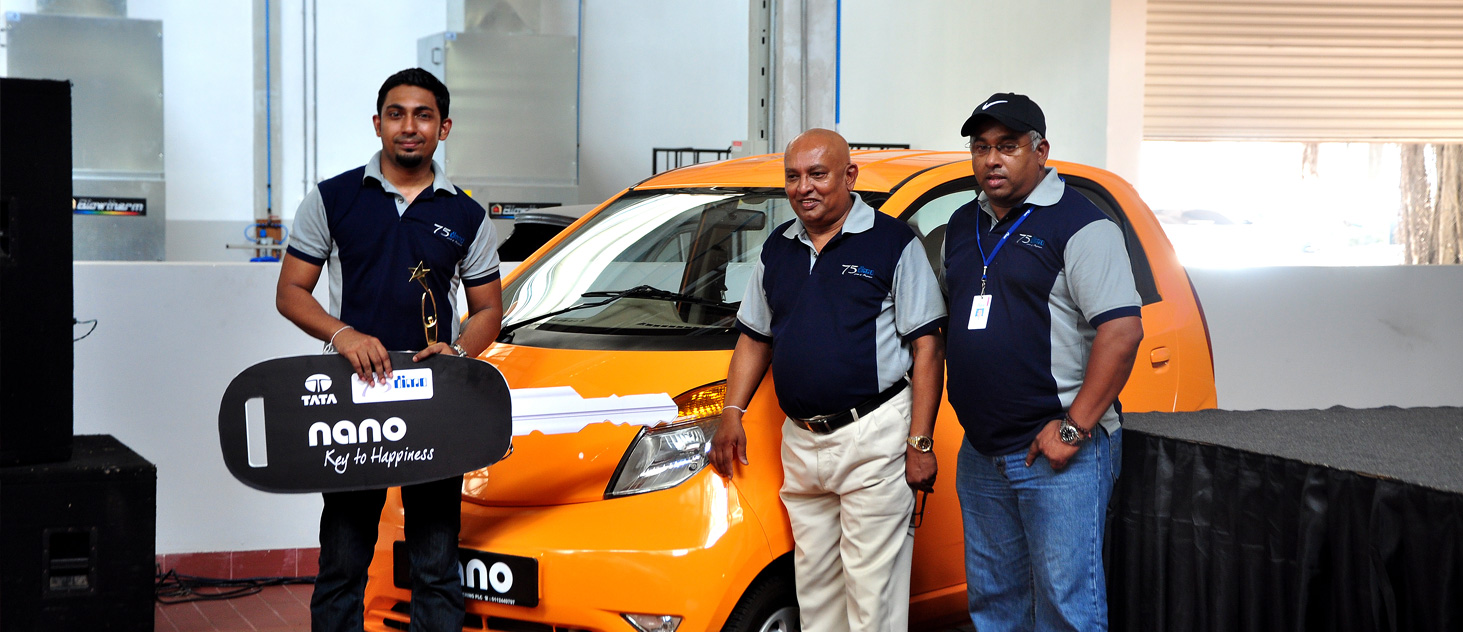
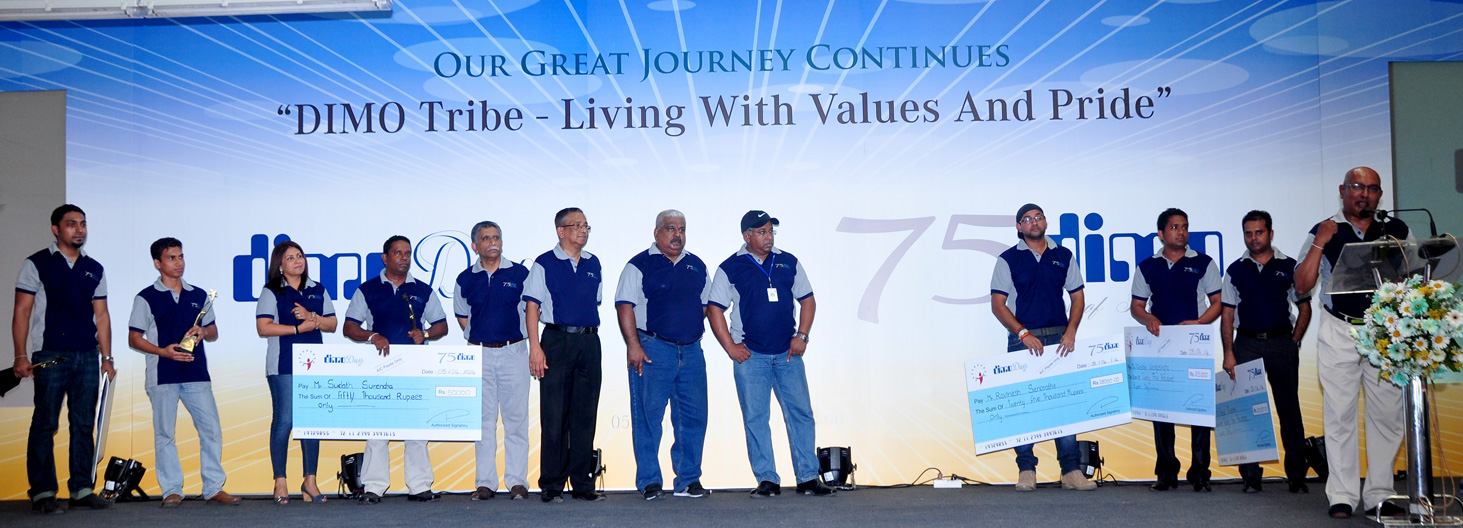
Non-discrimination
Ensuring that every member of our team is on a level playing field and works by the same set of rules
This policy extends to Dimo’s zero-tolerance policy on discrimination at the workplace. It is our enduring belief that discrimination based on any factor would result in the deterioration of the shared values that have sustained our company over the years. The human resource policy of the company brings objectivity and alignment to organizational objectives by defining recruitment, training, compensation, promotion, termination and other employment related activities, based solely on employment requirements and thus eliminating any room for discrimination. During the year, no incidences of discrimination were reported.
Labour practices & Human Rights Grievance Mechanisms
Encouraging and nurturing employee communications - the processes in place
Dimo has taken the decision to institute formal grievance handling mechanisms to identify any abuses of human rights or labour practices, because the lack of such mechanisms and any failure in maintaining the standards we have set would result in a loss of trust, thus leading to poor team performance. The management of such a situation has been operationalized through a range of formal and informal mechanisms. Priority has been given to informal mechanisms such as the open door policy - fast-tracking employee concerns and enabling a quick resolution of such issues. All Management including the Chairman remain accessible to every employee in order to encourage reporting and effecting prompt resolution of problems. Formal approaches in place include the Employee Council and the HR Clinics which deliver responses to complaints within 10 days. The ultimate evaluation of these mechanisms is performed through the Employee Satisfaction surveys conducted by an independent third party. This survey strives to offer a holistic picture of the complete employment experience of each tribe member. The results of this Survey are stated below:
28 grievances were filed during the year under review and all were satisfactorily resolved
Description |
2013/14 (%) |
2012/13 (%) |
2011/1 (%) |
The total number of hours devoted to training in HR policies and procedures as a percentage of total training hours |
2.7 |
5 |
6.2 |
The total number of employees who received training in HR policies and procedures |
17 |
41 |
42 |

